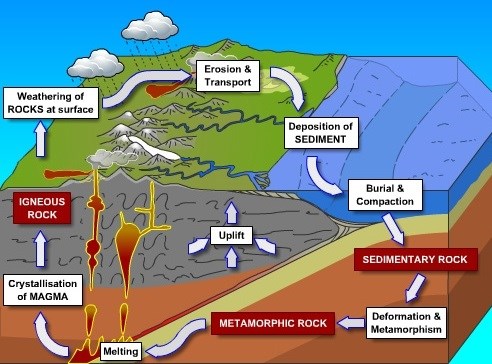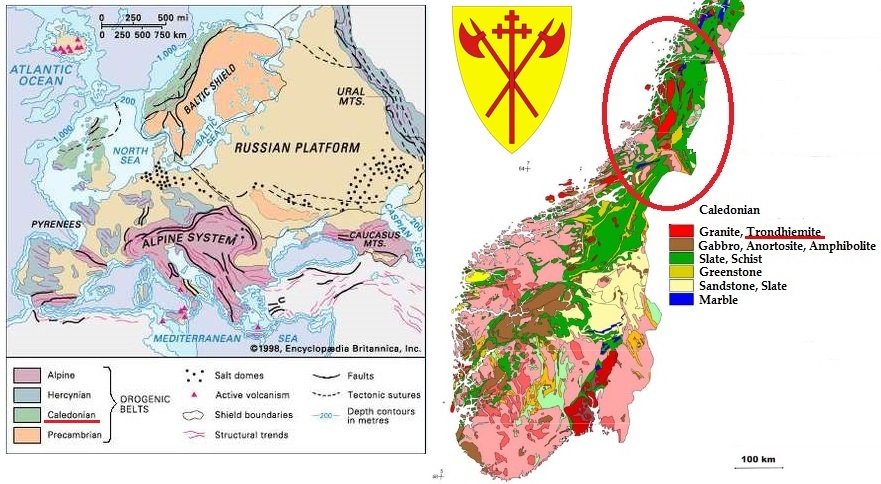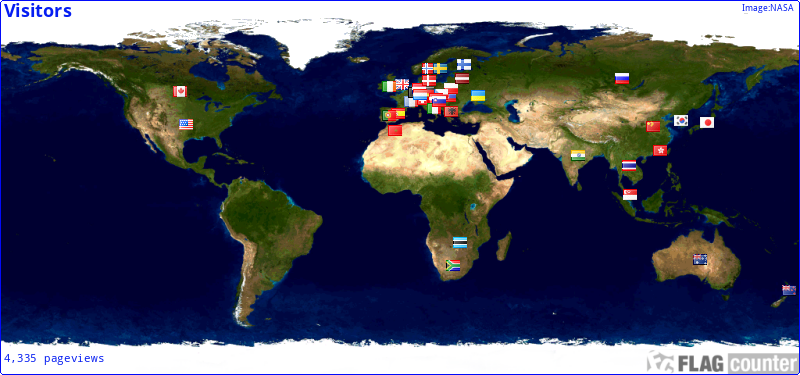
**This cache is located within an area frequently patrolled by Police. Please avoid acting suspiciously whilst searching for it, and if challenged, explain about geocaching. It may be worth pointing out that it is not a physical box you are looking for, but are simply studying the rocks visible to everyone.**
...
The learning point of this earthcache is to get to know the Trondhjemite stone better.
The coordinates lead you to the corner of the Department of Business, Innovation & Skills building at Victoria Street. The light coloured stones at the wall are made of the rock Trondhjemite.
...
Rocks found on the Earth's surface actually come from inside the Earth - so they tell us a lot about the Earth's interior. They are classified (organised) into three main groups: igneous rocks, sedimentary rocks and metamorphic rocks.
...
Igneous rock
Igneous rocks are formed by magma from the molten interior of the Earth. When magma erupts it cools to form volcanic landforms. If magma cools inside the Earth it forms intrusive rock, which may later be exposed by erosion and weathering.

Metamorphic rock
Metamorphic rocks have been subjected to tremendous heat and/or pressure, causing them to change into another type of rock. They are usually resistant to weathering and erosion and are therefore very hard-wearing.
...
Composition and formation.
Trondhjemite differs from the *granite rock because it has the feldspar type **plagioclase as the main field patch, *** and Orthoclase, which is characteristic of granite, and it makes up less than 10 percent of the total of the feldspar. ****Quartz occurs in significant amounts and black mica (biotite) is the characteristic dark mineral. Professionally classified as light or "leukocrat tonalite".
*Granite is a light-colored igneous rock with grains large enough to be visible with the unaided eye. It forms from the slow crystallization of magma below Earth's surface. Granite is composed mainly of quartz and feldspar with minor amounts of mica, amphiboles, and other minerals. (But not to be fully mixed with the Trondhjemite rock)
**Plagioclase is the name of a group of feldspar minerals that form a solid solution series ranging from pure albite, Na(AlSi3O8), to pure anorthite, Ca(Al2Si2O8).
***Orthoclase is a feldspar mineral with a chemical composition of KAlSi3O8. It is one of the most abundant rock-forming minerals of the continental crust. Orthoclase is most widely known as the pink feldspar found in many granite types.
****Quartz is a chemical compound consisting of one part silicon and two parts oxygen. It is silicon dioxide (SiO2). It is the most abundant mineral found at Earth's surface.
Trondhjemite seem to belong in areas where a seabed plate is pressed into the depths and begins to melt. They may be created by solidification of the first formed melt in heated seabed basalt under an mountain range.
Most Trondhjemite in Norway appeared as stone melts 510-450 million years ago. Later they were pushed and converted under the Caledonian mountain range folding.
...

Trondhjemite is a white (light colored) intrusive igneous rock (granite-like rock) that geologically classifies as tonalite. Trondhjemite contains more than 20% quartz, but differs from granite, because it has substantially only a field-type (plagioclasm). The rock Tonalite denotes an igneous, plutonic (intrusive) rock, of felsic composition. Quartz is present as more than 20% of the rock. Amphiboles and pyroxenes are common accessory minerals. Trondhjemite is an orthoclase-deficient variety of tonalite with minor biotite as the only mafic mineral, hence the light color. Tonalites and Trondhjemite is often formed deep into the crust, hence large crystals are common.
Trondhjemite has its name from the city Trondheim, when the name was spelled "Trondhjem". It is a light or white granite-like rock. Trondhjemite belongs to the group of pluton, pluton is a body of intrusive igneous rock (called a plutonic rock) that is crystallized from magma slowly cooling below the surface of the Earth.
The minerals are crystallized (made / occurs) from magma in deep and extrusives ekstrusive. The size of the crystals tells us where and how far down into the crust they were made and formed. Easy said and explained, the larger the crystals are, the longer they have been forming, and the deeper into the crust they origin from.
The Trondhjemite at the coordinates is from Støren, Sør-Trøndelag (Trøndelag), Norway. The main geological processes forming the Norwegian mountain range is the the Caledonian orogeny roughly from 450-400 Ma. The Caledonian orogeny was a mountain building era recorded in the northern parts of Ireland and Britain, the Scandinavian Mountains, Svalbard, eastern Greenland and parts of north-central Europe. This explains the rich variety of igneous and metamorphic rocks in this area.

To log this cache.
To get to log this cache you will have to visit and answer the questions which are related to the coordinates given the earthcache.
When answers are collected, send them to CO for verification.
You can log immediately after answers are sent CO. If there are any questions about your answers CO will contact you.
Logs without answers to CO or with pending questions from CO will be deleted without any further notice.
Please do not include pictures in your log that may answer the questions.
Questions:
1. Answer the questions under by visiting the Coordinates.
A. A-1) Go to the coordinates and study the Trondhjemite closely. How big in mm are the white quartz crystals and the black biotite crystals?
A-2) From what you have observed, do you think this Trondhjemite has been formed deep or shallow into the earth’s crust?
B. By visiting the coordinates, tell what picture, (from above in the text) that is from ground zero? (A, B or C)?
C. Which mineral is dominating the stone?
2. (It’s voluntary to post a photo in your online log of your visit)
Without revealing any answers!
